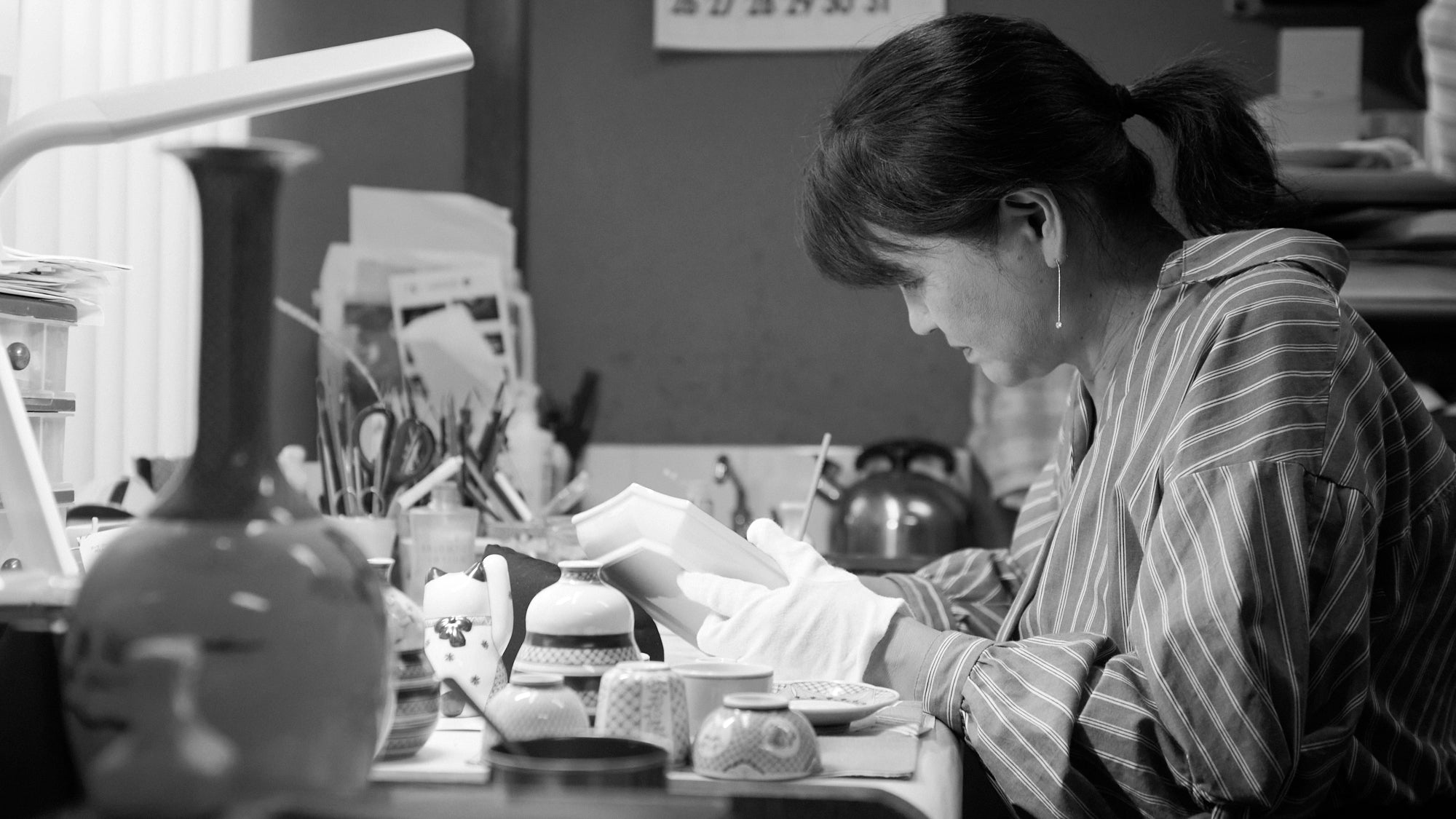
Fukushima Reiko: Conveying the Charm of Akae-Saibyo With Modern Sensibilities
Written by Team MUSUBI
Within the venerable tradition of Kutani ware, the akae-saibyo technique, a traditional method dating back to the Edo period (1603CE–1868CE), captivates people with its vibrant and delicate beauty. This method involves applying red paint and gold to Kutani porcelain to create intricate overglaze paintings. Artists employ the technique to draw hair-thin lines at a consistent speed, depicting patterns, birds, flowers, landscapes, and human figures.
Although Kutani ware is famous for its vivid, multicolored paints known as Kutani gosai (red, green, yellow, purple, and navy blue), the red paint allows for the finest lines without unevenness. The charm of akae-saibyo lies in its ability to express a wide range of subjects using solely the color red.

Despite her busy schedule, she warmly welcomed Team Musubi. Although she modestly claims to still be in training, upon viewing her work, we were struck by the gentle lines and the charming motifs that distinctly reflect her unique artistic allure.
Table of Contents
Individuality Expressed Through Lines
Buzan is a pioneer in reviving techniques developed by predecessors, bringing them into the modern era. He has expertly captured a sense of depth in his work, previously considered challenging to achieve with only the color red. His contemporary style has earned him numerous awards over the years.


Discussing her father's technique, she noted his lines as exceedingly smooth and soft. Buzan shared his perspective on drawing, remarking, "When I move my hand, it invariably progresses forward. I derive pleasure from client interactions, and the act of drawing itself brings me enjoyment."
Creating Personal Motifs
Buzan encouraged her to explore painting karako, a traditional motif of Chinese children, which led her to draw numerous representations of these figures. Her renderings of karako, noted for their charm, have garnered substantial acclaim from customers.

Her creativity may also be influenced by her prior experience with egg art in the United States, before she became a porcelain painter. The color selection and detailed painting involved in creating egg art bear similarities to the akae-saibyo technique.

Spreading the Allure of Akae-Saibyo
"While I recognize the challenges of managing every aspect from molding the base to painting independently, I observe many artisans working on identical bases. Thus, I am motivated to start from the very beginning to create something genuinely original," she stated.

In addition to her painting work, she actively conducts workshops. It appears that these workshops have prompted individuals to attend her exhibitions and acquire her products. Furthermore, she is involved in crafting accessories and nail designs utilizing the akae-saibyo technique, which forms an integral part of her initiative to enhance recognition of this style and Kutani ware.
"I am keen to familiarize broader people with Kutani ware through akae-saibyo. By engaging in local events and interacting with diverse groups, I strive to communicate the allure of akae-saibyo and Kutani ware," she elaborated.

Akae-saibyo, a captivating artistry distinguished by its delicate charm, stands as one of Kutani ware's three primary techniques. Its allure has drawn countless admirers. As Reiko forges her path, both personally and professionally, she not only preserves this cherished heritage but also breathes new life into it, expanding its influence far and wide.








Leave a comment
This site is protected by hCaptcha and the hCaptcha Privacy Policy and Terms of Service apply.